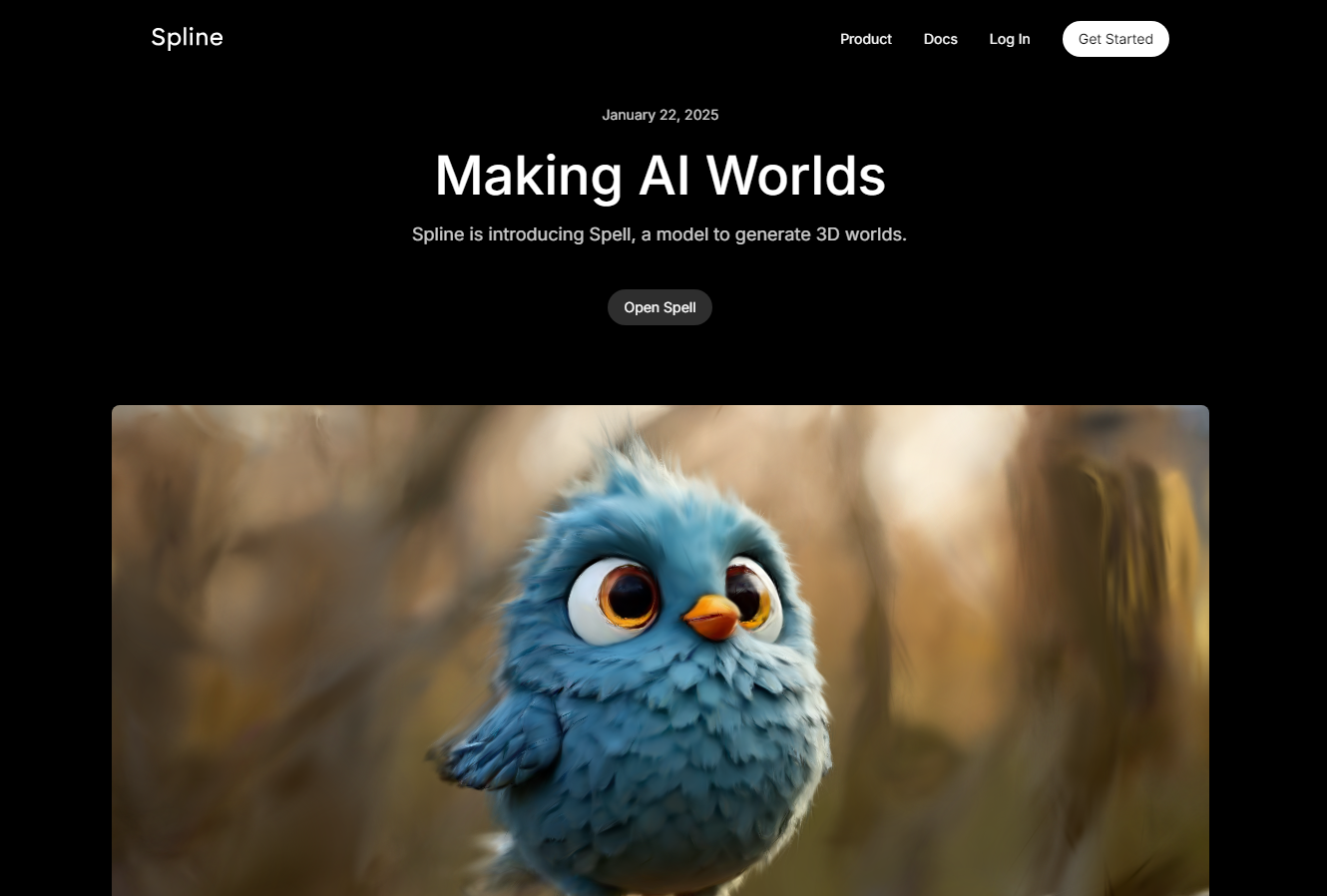
Table of Contents
Overview
Imagine turning a simple 2D image into a fully explorable 3D world in a matter of minutes. Spell by Spline makes this a reality. This innovative AI-powered tool bridges the gap between static images and dynamic 3D environments, opening up a world of possibilities for designers, creators, and developers. Let’s dive into what makes Spell by Spline a game-changer.
Key Features
Spell by Spline boasts a powerful set of features designed to streamline the 3D creation process:
- AI-driven 3D scene generation from images: Effortlessly transform any 2D image into a coherent 3D scene with the power of AI.
- Support for Gaussian Splatting and NeRFs: Leverage advanced rendering techniques like Gaussian Splatting and Neural Radiance Fields (NeRFs) for realistic and dynamic spatial representations.
- Real-time rendering of virtual environments: Experience instant feedback and iterate quickly with real-time rendering capabilities.
- Integration with Spline design tools: Seamlessly integrate generated 3D scenes into Spline’s intuitive design platform for further customization and refinement.
- Consistent spatial fidelity to input images: Ensure that the generated 3D environment accurately reflects the spatial relationships and details present in the original image.
How It Works
The process of creating 3D worlds with Spell by Spline is remarkably straightforward. Users begin by uploading an image into the Spell interface. The AI algorithms then take over, meticulously analyzing the visual data to extrapolate a coherent and immersive 3D environment. This environment is then rendered as a volumetric representation, utilizing either Gaussian Splatting or NeRFs for optimal visual fidelity. Finally, the resulting 3D world can be directly used within Spline’s 3D design platform, allowing for further modification, refinement, and integration into larger projects.
Use Cases
Spell by Spline’s versatility makes it a valuable asset across various industries and creative endeavors:
- Game and VR environment prototyping: Quickly prototype immersive game and VR environments from concept art or reference images.
- Rapid 3D asset creation from concept art: Accelerate the 3D asset creation process by generating starting points from existing 2D artwork.
- Immersive media content production: Create captivating and engaging immersive media experiences with ease.
- Architectural visualization: Visualize architectural designs and concepts in stunning 3D, bringing blueprints to life.
- Creative storytelling and scene design: Enhance storytelling and scene design by creating dynamic and explorable 3D environments.
Pros & Cons
Like any tool, Spell by Spline has its strengths and weaknesses. Let’s take a closer look:
Advantages
- Fast and intuitive 3D scene generation, saving valuable time and resources.
- High-quality rendering with minimal input, producing visually impressive results.
- Enhances creative workflows by providing a rapid prototyping and visualization solution.
Disadvantages
- May require post-processing for production use to achieve desired levels of polish.
- Limited real-world physics simulation, requiring manual implementation for realistic interactions.
- Currently limited to image-based input, lacking support for other input formats.
How Does It Compare?
When considering alternatives, it’s important to understand the nuances of each tool. Luma AI offers similar NeRF-based rendering capabilities, but lacks the tight integration with a dedicated design tool like Spline. Kaedim, on the other hand, focuses primarily on generating 3D meshes from sketches, which differs from Spell by Spline’s full scene context approach. Spell by Spline stands out due to its balance of AI-powered scene generation and seamless integration with a user-friendly 3D design platform.
Final Thoughts
Spell by Spline is a powerful and innovative tool that democratizes 3D content creation. Its ability to transform 2D images into immersive 3D worlds with minimal effort makes it a valuable asset for designers, developers, and creators of all skill levels. While it has some limitations, its strengths far outweigh its weaknesses, making it a compelling solution for anyone looking to streamline their 3D workflow and unlock new creative possibilities.

